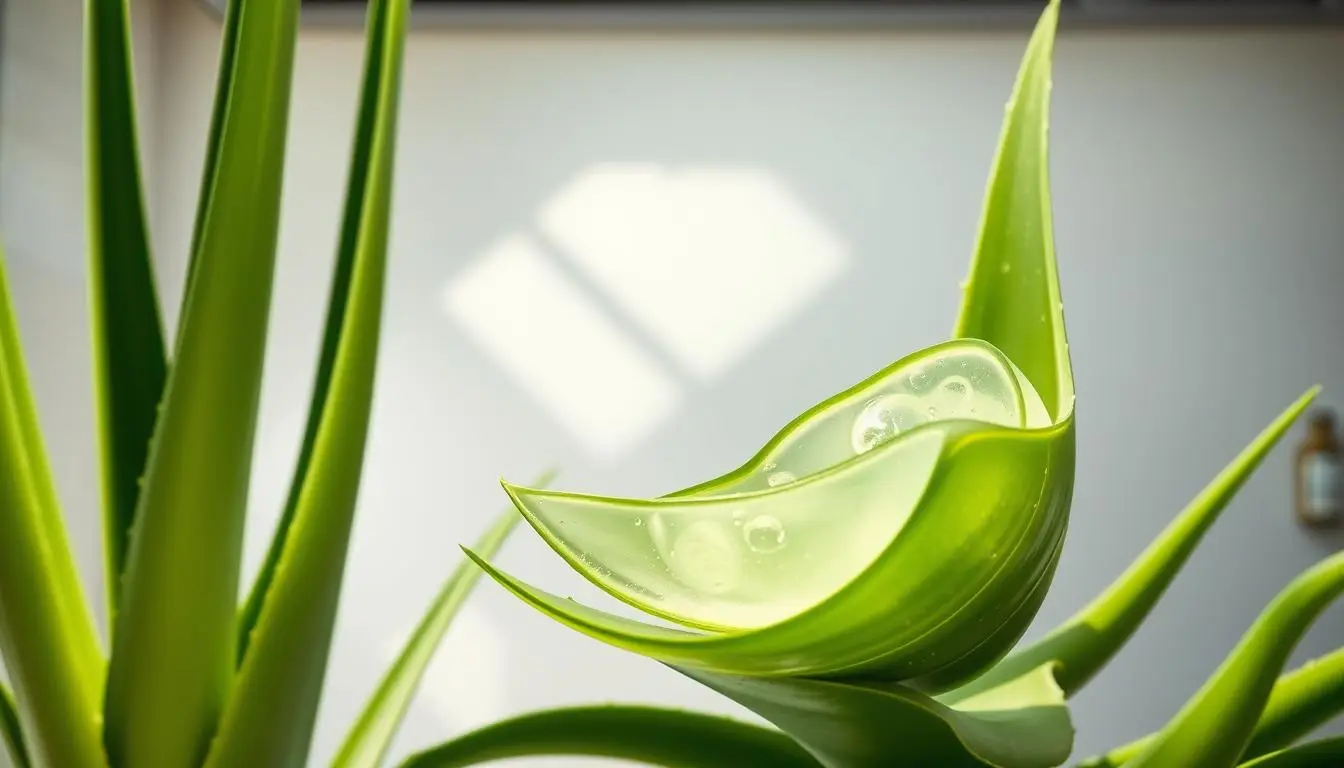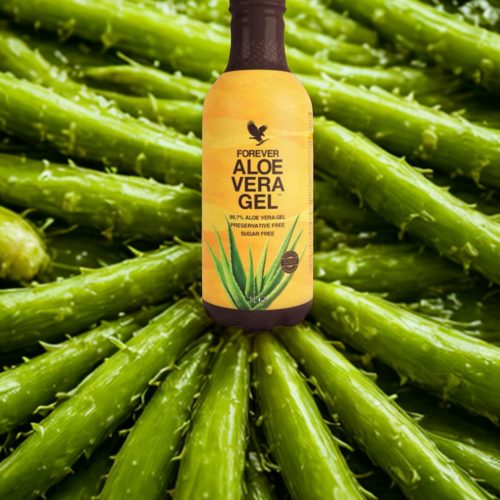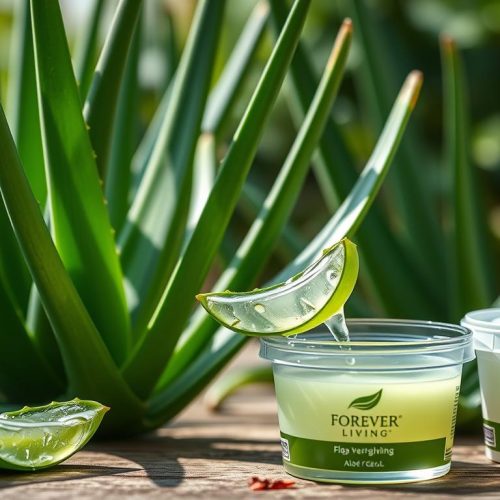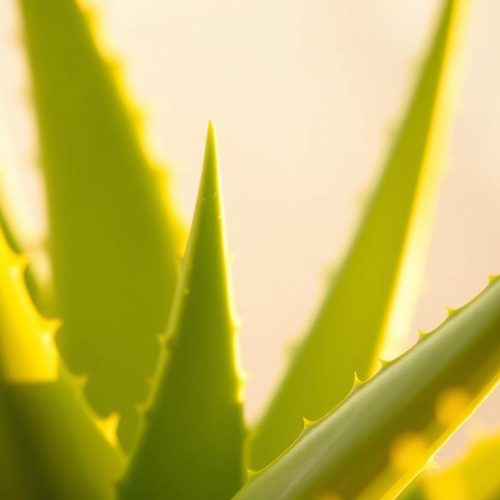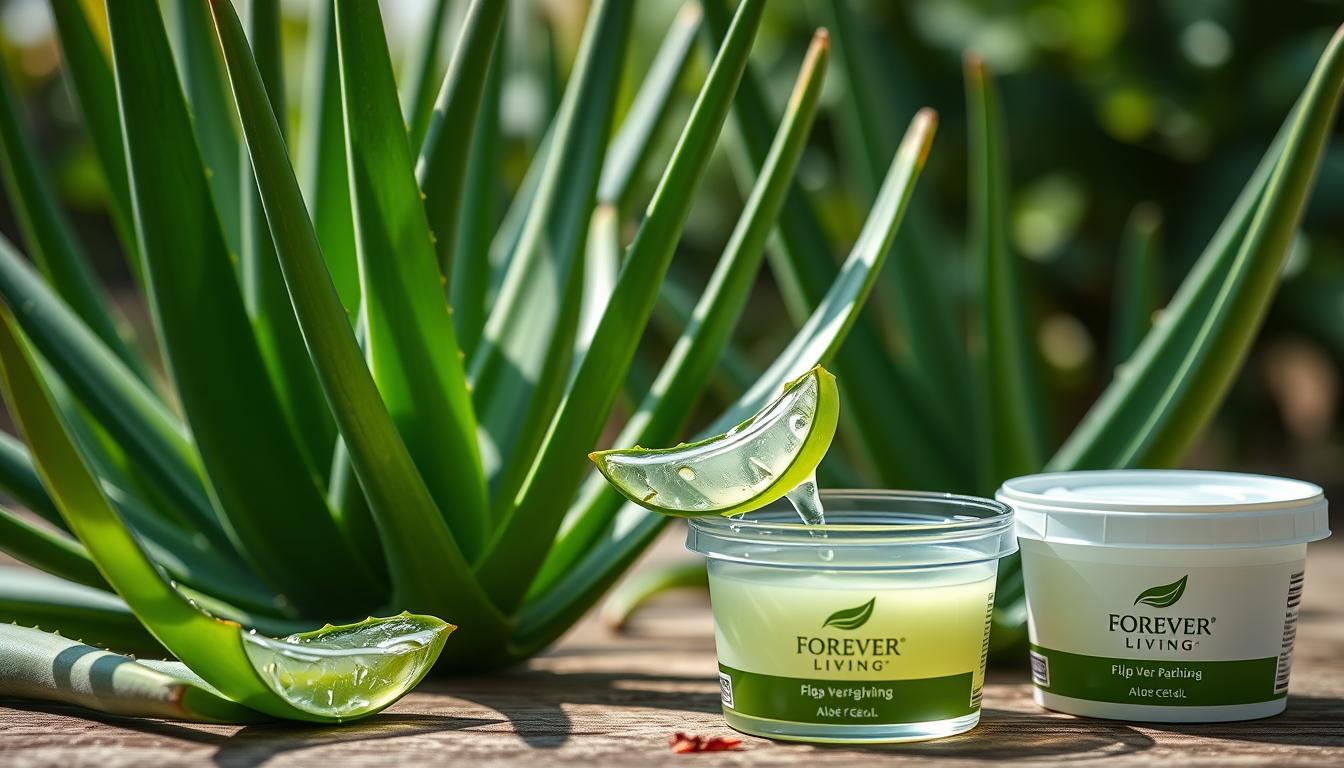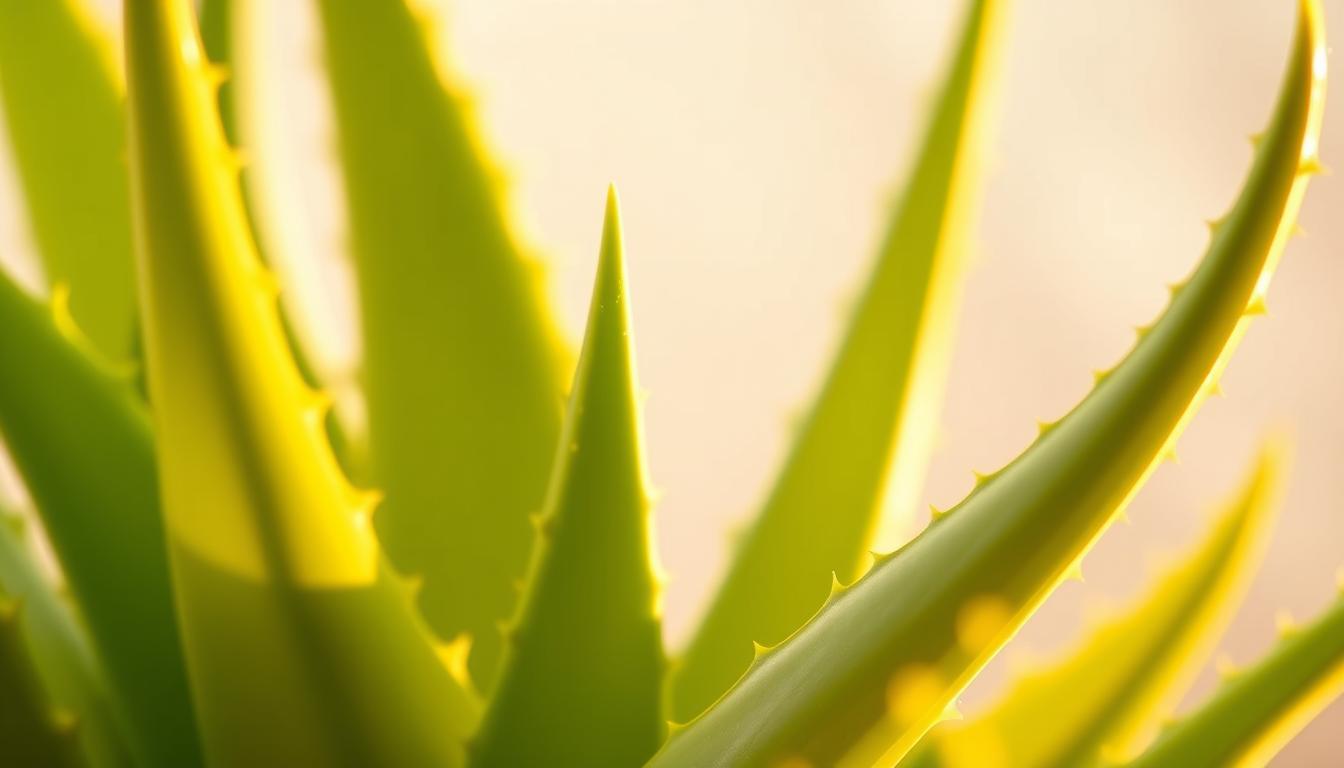The aloe vera plant is a succulent that stores water in its leaves in the form of a highly moisturizing gel. This gel is not only great for soothing sunburns and bug bites but also for treating minor cuts or wounds and other skin issues.
The process of transforming the aloe vera plant into a usable gel involves several steps, from harvesting to processing. Understanding aloe vera gel production can help individuals appreciate the effort that goes into creating skincare products. Moreover, knowing processing aloe vera plant methods can empower consumers to create their own homemade skincare products.
- The Remarkable Aloe Vera Plant
- Cultivating Aloe Vera for Gel Production
- Harvesting Aloe Vera Leaves
- Commercial Aloe Vera Gel Production Process
- How Aloe Vera Gel is Made: Industrial Methods
- Timeline: How Long Does It Take to Make Aloe Vera Gel
- Step-by-Step DIY Aloe Vera Gel Extraction
- Creating Homemade Aloe Vera Skincare Products
- Preservation and Storage of Aloe Vera Gel
- Troubleshooting Common Issues in Aloe Vera Gel Production
- Conclusion
- FAQ
- What is the ideal climate for cultivating aloe vera?
- How often should aloe vera leaves be harvested?
- What is the difference between cold processing and heat treatment in aloe vera gel production?
- How can I prevent my homemade aloe vera gel from spoiling?
- What are the signs that aloe vera gel has gone bad?
- Can I use aloe vera gel on my hair?
- How do I extract aloe vera gel at home?
- What are the benefits of using aloe vera gel on the skin?
- How long does it take to produce aloe vera gel commercially?
- Can aloe vera gel be frozen for longer storage?
- The Remarkable Aloe Vera Plant
- Cultivating Aloe Vera for Gel Production
- Harvesting Aloe Vera Leaves
- Commercial Aloe Vera Gel Production Process
- How Aloe Vera Gel is Made: Industrial Methods
- Timeline: How Long Does It Take to Make Aloe Vera Gel
- Step-by-Step DIY Aloe Vera Gel Extraction
- Creating Homemade Aloe Vera Skincare Products
- Preservation and Storage of Aloe Vera Gel
- Troubleshooting Common Issues in Aloe Vera Gel Production
- Conclusion
- FAQ
- What is the ideal climate for cultivating aloe vera?
- How often should aloe vera leaves be harvested?
- What is the difference between cold processing and heat treatment in aloe vera gel production?
- How can I prevent my homemade aloe vera gel from spoiling?
- What are the signs that aloe vera gel has gone bad?
- Can I use aloe vera gel on my hair?
- How do I extract aloe vera gel at home?
- What are the benefits of using aloe vera gel on the skin?
- How long does it take to produce aloe vera gel commercially?
- Can aloe vera gel be frozen for longer storage?
Key Takeaways
- Understanding the importance of aloe vera gel in skincare.
- Learning the basic steps involved in how aloe vera gel is made.
- Discovering DIY methods for harvesting fresh aloe vera gel.
- Creating homemade skincare products using aloe vera.
- Appreciating the process of transforming aloe vera plants into usable gel.
The Remarkable Aloe Vera Plant
The aloe vera plant is renowned for its medicinal and cosmetic properties, making it a valuable resource in various industries. This succulent has adapted to survive in harsh, dry environments, showcasing its resilience.
Origins and Natural Habitat
Aloe vera is native to Africa, specifically the Arabian Peninsula. It thrives in dry, tropical climates and is commonly found in regions with warm temperatures and low humidity. The plant’s ability to store water in its leaves allows it to survive in areas with limited rainfall.
Botanical Characteristics
Aloe vera is characterized by its thick, fleshy leaves that contain a gel-like substance. The leaves are typically green or grayish-green and have serrated edges. The plant’s root system is fibrous and shallow, allowing it to absorb moisture and nutrients efficiently.
Medicinal and Cosmetic Properties
The gel inside aloe vera leaves is rich in vitamins A, C, and E, as well as minerals like calcium and potassium. It has anti-inflammatory and antimicrobial properties, making it beneficial for soothing skin irritations and promoting wound healing. In cosmetics, aloe vera is used in skincare products for its moisturizing and soothing effects.
Aloe vera is resistant to insects and disease, making it a hardy crop that doesn’t require pesticides. This natural resistance, combined with its beneficial properties, has made aloe vera a popular ingredient in both medicinal and cosmetic applications.
Cultivating Aloe Vera for Gel Production
To produce aloe vera gel, it’s essential to understand the cultivation process of the aloe vera plant. Aloe vera is grown in various parts of the world, and its cultivation requires specific conditions to ensure high-quality gel production.
Ideal Growing Conditions
Aloe vera thrives in warm, dry climates with adequate sunlight. The ideal temperature for its growth ranges between 65°F to 80°F (18°C to 27°C). Well-draining soil is crucial to prevent root rot, a common issue in aloe vera cultivation.
“Aloe vera is a drought-tolerant plant, but consistent moisture levels promote healthier leaf production,”
Commercial Farming Practices
Commercial aloe vera farming involves large-scale cultivation using advanced irrigation systems and fertilization techniques. Farmers often employ crop rotation and integrated pest management to maintain soil health and reduce pests. The use of organic farming practices is becoming increasingly popular to enhance sustainability.
Sustainable Cultivation Methods
Sustainable methods in aloe vera cultivation include using rainwater harvesting systems and implementing organic fertilizers. Some farms are also adopting regenerative agriculture practices to improve soil biodiversity and reduce environmental impact. As John Doe, a renowned aloe vera farmer, puts it, “Sustainable cultivation not only benefits the environment but also results in higher quality aloe vera gel.”
By adopting these practices, aloe vera farms can ensure a consistent supply of high-quality leaves for gel production, ultimately benefiting both the environment and the consumer.
Harvesting Aloe Vera Leaves
The quality of aloe vera gel depends significantly on how the leaves are harvested. Proper harvesting techniques ensure that the gel extracted is of high quality and rich in beneficial properties.
Optimal Harvesting Time
The best time to harvest aloe vera leaves is early in the morning, after the plant has had a night to absorb water and nutrients. This timing helps in maximizing the gel content and quality.
Proper Cutting Techniques
When harvesting, it’s essential to use proper cutting techniques. The largest and most mature leaves are selected from the base of the plant. Cutting at the base of the leaf prevents damage to the plant and exposure to outside elements. Sharp, clean tools should be used to minimize damage and prevent infection.
“The method of harvesting can significantly impact the quality of the gel. Proper techniques can enhance the yield and purity of the gel.”
Post-Harvest Handling
After harvesting, the leaves should be handled carefully to maintain their quality. They should be stored in a cool, dry place and processed as soon as possible to prevent degradation.
Leaf Selection for Quality Gel
Not all leaves are suitable for gel production. Leaves that are thick, fleshy, and free from damage are ideal. Selecting the right leaves ensures that the gel produced is of high quality and has the desired medicinal and cosmetic properties.
For those interested in DIY methods, harvesting fresh aloe vera gel at home can be done by carefully selecting mature leaves and following proper handling and processing techniques. This not only ensures quality but also allows for control over the final product’s purity and potency.
Commercial Aloe Vera Gel Production Process
Aloe vera gel production on a commercial scale requires precise processing techniques. The journey from raw aloe vera leaves to commercial gel involves several critical steps.
Initial Processing of Harvested Leaves
Upon arrival at the processing facility, aloe vera leaves are thoroughly washed to remove dirt, bacteria, and other contaminants. This step is crucial for ensuring the quality and safety of the final product.
Gel Extraction Methods
The gel is extracted from the leaves using various methods, including manual scraping or mechanical processing. The choice of method depends on the scale of production and the desired quality of the gel.
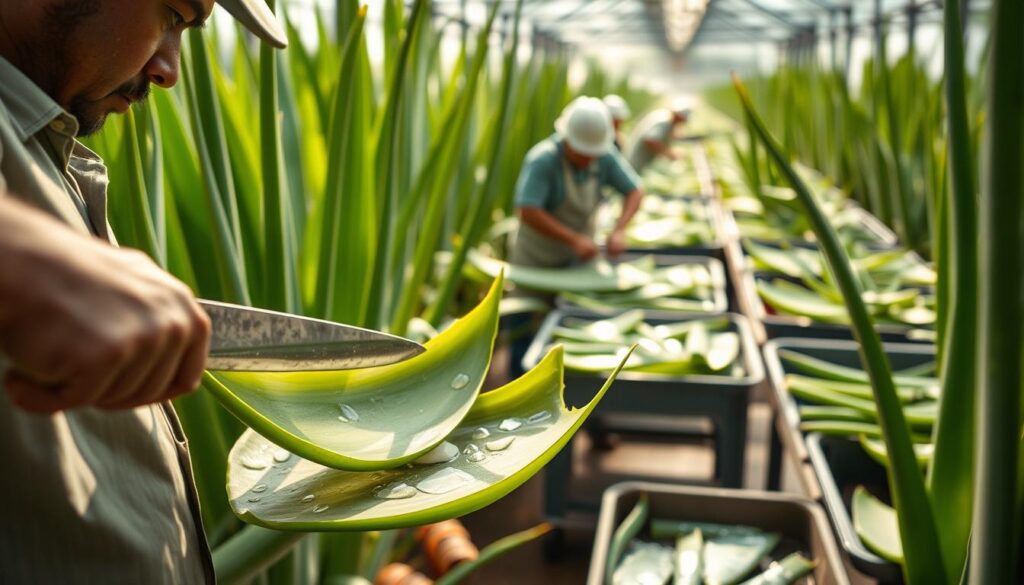
Filtration and Purification
After extraction, the gel undergoes filtration and purification to remove any remaining impurities. Techniques such as centrifugation, microfiltration, or activated carbon filtration may be employed to achieve the desired purity.
Scaling Production for Industry
To meet industrial demands, manufacturers scale up production using large-scale equipment and streamlined processes. This includes pasteurization to ensure safety and extend shelf life.
The commercial production process of aloe vera gel is designed to produce high-quality gel that meets industry standards. By understanding these processes, manufacturers can optimize production and deliver superior products to their customers.
- Initial leaf processing
- Gel extraction
- Filtration and purification
- Scaling production
How Aloe Vera Gel is Made: Industrial Methods
The process of transforming aloe vera into gel form industrially is complex, involving multiple stages to ensure the final product retains its beneficial properties. Industrial production methods are designed to maximize efficiency, consistency, and quality.
Cold Processing Technology
Cold processing technology is a preferred method in aloe vera gel production due to its ability to preserve the natural nutrients and properties of the plant. Cold-pressing involves extracting the gel from the inner leaf without applying heat, resulting in a thicker, more nutrient-rich product. This method is particularly effective in retaining vitamins and minerals that are sensitive to heat.
Heat Treatment Procedures
While cold processing is favored for its nutrient preservation qualities, some industrial processes may incorporate controlled heat treatment to achieve specific product characteristics or to ensure sterility. However, this is done carefully to avoid degrading the gel’s quality.
Quality Control Measures
Industrial producers implement rigorous quality control measures throughout the production process. This includes testing for purity, checking the gel’s viscosity, and ensuring the absence of contaminants. Such measures are crucial for maintaining consistency across batches and guaranteeing the product’s safety for consumer use.
Packaging Processes
The final stage in industrial aloe vera gel production is packaging. Manufacturers use a variety of packaging solutions, from dark glass bottles to aseptic containers, designed to protect the gel from light and contamination. The choice of packaging is influenced by the intended use of the gel and the target market.
By employing these industrial methods, manufacturers can produce high-quality aloe vera gel that meets consumer demands for purity, efficacy, and safety.
Timeline: How Long Does It Take to Make Aloe Vera Gel
From harvesting to final product, the journey of aloe vera gel production is time-sensitive. For the best quality aloe product, cutting and processing must be done within 48 hours.
Commercial Production Timeframes
Commercial aloe vera gel production is a highly optimized process. Typically, the entire process from harvesting to packaging takes around 24 to 48 hours. Advanced machinery and streamlined processes enable large-scale producers to maintain the gel’s quality while meeting high demand.
DIY Processing Duration
For individuals making aloe vera gel at home, the process is naturally slower. The entire DIY process, from preparing the aloe leaves to extracting and processing the gel, can take anywhere from a few hours to a full day, depending on the scale of production and the methods used.
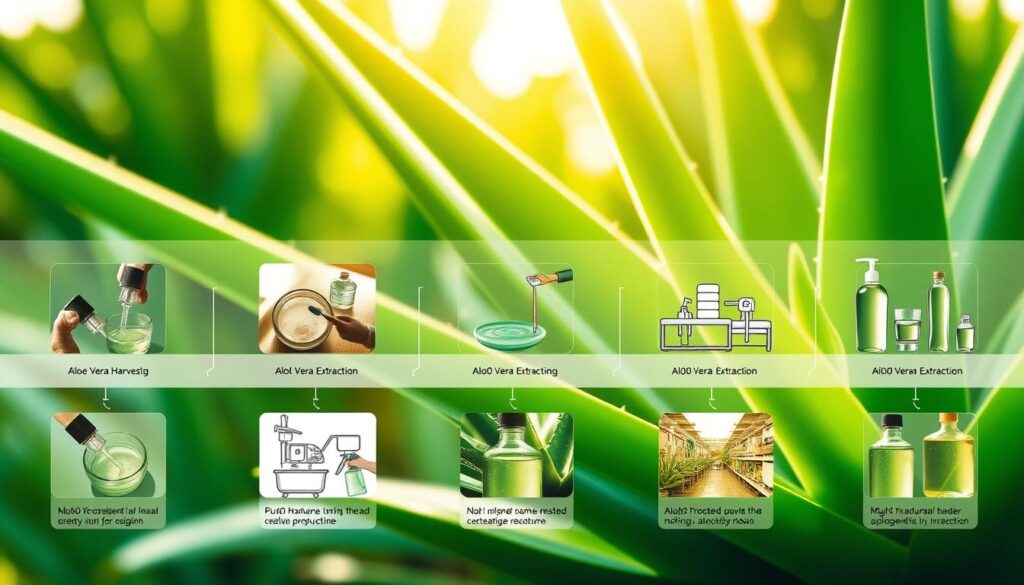
Factors Affecting Production Time
Several factors can influence the overall production time of aloe vera gel. These include the scale of production, the efficiency of the equipment used, and the specific processing methods employed. For instance, cold processing technology can extend production time compared to heat treatment methods.
Efficiency Improvements in Modern Processing
Modern processing techniques have significantly improved the efficiency of aloe vera gel production. Automation and advanced filtration systems have reduced processing times while maintaining or even improving the quality of the final product. As one industry expert notes,
“The key to successful aloe vera gel production is not just speed, but maintaining the delicate balance between processing time and product quality.”
By understanding these factors and leveraging modern processing techniques, both commercial producers and DIY enthusiasts can optimize their aloe vera gel production timelines.
Step-by-Step DIY Aloe Vera Gel Extraction
Extracting aloe vera gel at home is a straightforward process that requires some basic tools and attention to detail. To get started, you’ll need to understand the steps involved in transforming raw aloe vera leaves into usable gel.
Tools and Materials Needed
To extract aloe vera gel, you’ll need a few essential tools and materials. These include:
- A fresh aloe vera leaf
- A sharp knife or vegetable peeler
- A small spoon
- A blender (optional)
- An airtight container for storage
Preparing Your Aloe Leaf
Before extracting the gel, the aloe leaf must be properly prepared.
Washing and Disinfecting
Rinse the aloe vera leaf under running water to remove any dirt or debris. For more thorough cleaning, you can use a mild soap solution, ensuring you rinse it off completely.
Removing the Spines
Carefully trim the spines from the sides of the leaf using a sharp knife or vegetable peeler. This step is crucial for safe handling and to expose the gel inside.
Extracting the Gel
With your aloe leaf prepared, it’s time to extract the gel.
Filleting Technique
Using a sharp knife, carefully slice off the outer green layer of the leaf, revealing the clear gel inside. This method allows for a clean extraction with minimal waste.
Scooping Method
Alternatively, you can use a spoon to scoop out the gel from the leaf. This method is quicker but may result in slightly more waste.
Processing Fresh Gel
Once you’ve extracted the gel, you may want to process it further for consistency and storage.
Blending for Consistency
If you prefer a smoother gel, you can blend it in a blender. Be cautious not to introduce too much air, which can lead to spoilage.
Straining Options
For an even clearer gel, you can strain it through a cheesecloth or fine-mesh sieve. This step is optional but can improve the texture.
| Step | Description | Tools Needed |
|---|---|---|
| 1. Prepare Aloe Leaf | Wash and disinfect the leaf, remove spines | Water, mild soap, knife/vegetable peeler |
| 2. Extract Gel | Use filleting technique or scooping method | Sharp knife, spoon |
| 3. Process Gel | Blend for consistency, strain if desired | Blender, cheesecloth/fine-mesh sieve |
| 4. Store Gel | Transfer gel to airtight container | Airtight container |
Creating Homemade Aloe Vera Skincare Products
Creating homemade aloe vera skincare products is a simple and cost-effective way to harness the power of aloe vera. Aloe vera gel can be used directly on the skin to address various skincare needs, such as sunburn, minor cuts, and skin irritation. By incorporating aloe vera into your skincare routine, you can take advantage of its soothing, moisturizing, and anti-inflammatory properties.
Basic Aloe Vera Gel Recipe
To start creating your own aloe vera skincare products, you’ll first need aloe vera gel. The basic recipe involves extracting the gel from aloe vera leaves. Begin by selecting fresh, healthy aloe vera leaves. Cut the leaves open and scoop out the gel. You can then blend the gel to achieve a smooth consistency. For a more refined product, you can strain the gel through a cheesecloth to remove any remaining pulp.
Aloe Vera Face Masks and Moisturizers
Aloe vera makes an excellent face mask or moisturizer due to its hydrating properties. To create a simple face mask, mix aloe vera gel with honey and yogurt.
- 1 tablespoon aloe vera gel
- 1 teaspoon honey
- 1 teaspoon yogurt
Apply the mixture to your face and leave it on for 15-20 minutes before rinsing. For a moisturizer, you can combine aloe vera gel with a few drops of your favorite essential oil (like lavender or tea tree oil) and apply it directly to the skin.
Aloe Vera Hair Treatments
Aloe vera can also be used to nourish and condition your hair. Create a hair mask by mixing aloe vera gel with coconut oil and applying it to your hair from roots to tips. Leave the mask on for 30 minutes before shampooing. This treatment can help moisturize the scalp and promote healthy hair growth.
Aloe Vera Sunburn Relief Gel
One of the most popular uses of aloe vera is for sunburn relief. To create a soothing sunburn gel, mix aloe vera gel with a few drops of peppermint essential oil and some vitamin E oil. The cooling effect of peppermint and the antioxidant properties of vitamin E can enhance the soothing effects of aloe vera.
Natural Preservatives for Homemade Products
When creating homemade skincare products, it’s essential to consider preservation to prevent spoilage. Natural preservatives like grapefruit seed extract, potassium sorbate, and vitamin E oil can be used to extend the shelf life of your products. For example, adding a few drops of grapefruit seed extract to your aloe vera gel can help prevent the growth of bacteria and mold.
Preservation and Storage of Aloe Vera Gel
The preservation and storage of aloe vera gel are crucial steps in maintaining its quality and effectiveness. Whether you’re a commercial producer or a home user, understanding the best methods for preserving aloe vera gel is essential to ensure it retains its beneficial properties.
Commercial Preservation Techniques
Commercial producers often employ advanced preservation techniques to extend the shelf life of aloe vera gel. These methods include:
- Adding Preservatives: Chemicals like potassium sorbate or sodium benzoate are commonly used to prevent microbial growth.
- Heat Treatment: Some manufacturers use pasteurization to kill bacteria and extend shelf life.
- Advanced Packaging: Using airtight, opaque containers to protect the gel from light and oxygen.
Home Storage Solutions
For those making aloe vera gel at home, proper storage is equally important. Here are some guidelines:
Refrigeration Guidelines
Freshly extracted aloe vera gel can be stored in the refrigerator for up to one week. It’s essential to keep it in an airtight container to prevent contamination.
Freezing Methods
For longer storage, freezing is an effective method. You can freeze aloe vera gel in ice cube trays for easy use later. Frozen gel can last for several months without significant loss of quality.
Signs of Spoilage
Regardless of the storage method, it’s crucial to monitor your aloe vera gel for signs of spoilage. These include:
- Off Smell: A sour or unpleasant odor is a clear indication that the gel has gone bad.
- Color Change: Fresh aloe vera gel is typically clear or slightly yellowish. Significant darkening or discoloration can indicate spoilage.
- Mold Growth: Visible mold or yeast growth is a sign that the gel is no longer safe to use.
Extending Shelf Life Naturally
To extend the shelf life of aloe vera gel without using chemical preservatives, you can try the following:
- Vitamin C: Adding vitamin C (ascorbic acid) can help preserve the gel naturally.
- Vitamin E: Known for its antioxidant properties, vitamin E can also help in preserving the gel.
By following these preservation and storage techniques, you can ensure your aloe vera gel remains effective and safe for use.
Troubleshooting Common Issues in Aloe Vera Gel Production
Producing high-quality aloe vera gel requires overcoming several common issues that can affect its quality and efficacy. Manufacturers must address these challenges to ensure their product meets consumer expectations.
Addressing Bitterness
One of the primary concerns in aloe vera gel production is bitterness, caused by the presence of aloin, a compound found in the latex of the aloe vera plant. To minimize bitterness, proper leaf selection and processing techniques are crucial. This includes:
- Careful removal of the outer leaf skin
- Thorough washing to remove latex
- Using processing methods that reduce aloin content
Preventing Discoloration
Aloe vera gel can discolor due to enzymatic reactions or exposure to heat and light. To prevent this:
- Use cold processing techniques
- Minimize exposure to air and light during processing
- Add natural antioxidants like vitamin C
Maintaining Proper Consistency
The consistency of aloe vera gel can vary based on the processing method and storage conditions. To maintain the desired texture:
- Control the ratio of gel to other ingredients
- Use thickening agents if necessary
- Store the product in appropriate conditions
Avoiding Contamination
Contamination is a significant risk in aloe vera gel production. To avoid this:
- Implement strict hygiene practices during processing
- Use clean equipment and storage containers
- Test for microbial contamination regularly
By addressing these common issues, manufacturers can produce high-quality aloe vera gel that meets consumer expectations for quality and efficacy.
Conclusion
The process of making aloe vera gel involves careful cultivation, harvesting, and processing to create a high-quality product. Aloe vera gel production has become a significant industry due to its numerous health and skincare benefits.
Aloe vera gel is used in various applications, from moisturizing and soothing sunburns to aiding in wound healing. Its versatility and effectiveness have made it a popular ingredient in many cosmetic and pharmaceutical products.
Understanding how aloe vera gel is made can help appreciate the quality and efficacy of the final product. Whether used commercially or extracted at home, aloe vera gel remains a valuable natural resource with a wide range of uses.
FAQ
What is the ideal climate for cultivating aloe vera?
Aloe vera thrives in warm, dry climates with plenty of sunlight, making regions with mild winters and hot summers ideal for its cultivation.
How often should aloe vera leaves be harvested?
Aloe vera leaves are typically harvested every 6-8 weeks, depending on the maturity of the plant and the growing conditions.
What is the difference between cold processing and heat treatment in aloe vera gel production?
Cold processing preserves the natural properties of aloe vera by avoiding heat, while heat treatment can extend shelf life but may degrade some of the gel’s natural benefits.
How can I prevent my homemade aloe vera gel from spoiling?
To prevent spoilage, store your homemade aloe vera gel in airtight containers, keep it refrigerated, and consider adding natural preservatives like vitamin E or grapefruit seed extract.
What are the signs that aloe vera gel has gone bad?
Signs of spoilage include an off smell, change in color or texture, and the presence of mold or bacteria. If you notice any of these, it’s best to discard the gel.
Can I use aloe vera gel on my hair?
Yes, aloe vera gel can be used as a hair treatment to moisturize and soothe the scalp, promoting healthy hair growth.
How do I extract aloe vera gel at home?
To extract aloe vera gel at home, carefully cut open the leaf, scoop out the gel, and blend it to achieve the desired consistency. Strain the mixture to remove any remaining solids.
What are the benefits of using aloe vera gel on the skin?
Aloe vera gel is known for its soothing, moisturizing, and anti-inflammatory properties, making it beneficial for treating skin irritations, burns, and dry skin.
How long does it take to produce aloe vera gel commercially?
Commercial production of aloe vera gel can take anywhere from a few hours to several days, depending on the scale of production and the processing methods used.
Can aloe vera gel be frozen for longer storage?
Yes, aloe vera gel can be frozen to extend its shelf life. It’s best to portion it into airtight containers or ice cube trays before freezing.
